Abstract
A medical advertisement can include media such as newspapers, magazines, and the Internet. Currently, the Internet is responsible for most medical advertising. Our purpose is to investigate the current status of radiologic images posted on hospitals’ websites nationwide, and to evaluate the reliability of online medical advertisements using these images. I investigated the websites of all 1,450 hospitals and 290 oriental medicine clinics nationwide. Specific information on the radiologic images posted was recorded. In terms of body parts, musculoskeletal images account for 78% of the radiologic images on hospitals’ websites and 98% of the images for oriental medicine clinics. The purposes for posting radiologic images are to explain the pathophysiology of diseases or the technique of surgical treatments, and to show the effects of hospital-specialized treatments. The most commonly used modalities of radiologic images are plain radiography and MR. More than 90% of the posted images have no source; 10% have no legends; and 5% to 7% have inappropriate legends. In terms of quality, only 60% of the radiologic images on hospitals’ websites are rated as acceptable. Fifteen percent of the oriental medicine clinics posted the radiologic images without having a medical doctor on staff. Considering the results, I conclude that it is necessary to reestablish a system of pre-screening and post-evaluation for reviewing hospital websites, especially focusing on the radiologic images posted. Then we can prevent the inappropriate information from influencing or damaging public health, and set up healthy medical competition.
Go to : 
REFERENCES
1. Korean Medical Association. Criteria for deliberation by Korean Medical Association Medical Ad Review Committee. Seoul: Korean Medical Association;2014.
2. Article 56 of the Medical Law. No. 15540 (Mar 27, 2018).
3. Article 57 (1) of the Medical Law. No. 15540 (Mar 27, 2018).
4. Article 57 (3) of the Medical Law. No. 15540 (Mar 27, 2018).
5. Article 28 of the Medical Law. No. 15540 (Mar 27, 2018).
6. Article 24 of Enforcement Decree of Medical Law. No. 28695 (Mar 6, 2018).
7. Article 89 of the Medical Law. No. 15540 (Mar 27, 2018).
8. Constitutional Court Decision. 2015HUNBA75 (Sentenced Dec 23, 2015).
9. Ministry of Health and Welfare. Internet illegal medical ad eradication cooperation [Internet]. Sejong: Ministry of Health and Welfare;2016. [cited 2018 Jun 19]. Available from:. http://www.mohw.go.kr/react/al/sal0301vw.jsp?PAR_MENU_ID=04&MENU_ID=0403&page=1&CONT_SEQ=329825&SEARCHKEY=TITLE&SEARCHVALUE=인터넷의불법의료광고근절협력.
10. Vagias WM. Likert-type scale response anchors [Internet]. Clemson: Clemson University;2016. [cited 2018 Jun 19]. Available from:. http://www.clemson.edu/centers-institutes/tourism/documents/sample-scales.pdf.
11. Park KR. Study on rational managements for medical institution's homepage [dissertation]. Seoul: Yonsei University;2013.
12. Lee YK, Jeon HH, Lee J. Hospitals medical ad operation status and improvement plan. Seoul: Korea Hospital Management Institute;2017.
13. Article 23 of Enforcement Decree of Medical Law. No. 28695 (Mar 6, 2018).
14. Ministry of Health and Welfare; Ministry of Government Administration and Home Affairs. Privacy guidelines: medical institution. Sejong: Ministry of Health and Welfare;2015.
15. Jeong Y, Lee K, Lee YR. Personal information protection status and measures of medical institutions. Seoul: Korea Institute for Health and Social Affairs;2013.
16. Article 27 (1) of the Medical Law. No. 15540 (Mar 27, 2018).
17. Kim H, Kum KH, Lee A. Medical advertising regulation status and improvement direction. Seoul: Institute of Medical Policy;2017.
18. Yoo HJ. A limit of the prohibition of article type medical advertisement. Korea Soc Law Med. 2012; 132:141–178.
19. Choi JE, Song SH. Medical ad preliminary deliberation meaning of unconstitutionality and improvement task. Issues Points. 2016; 1128:1–4.
Go to : 
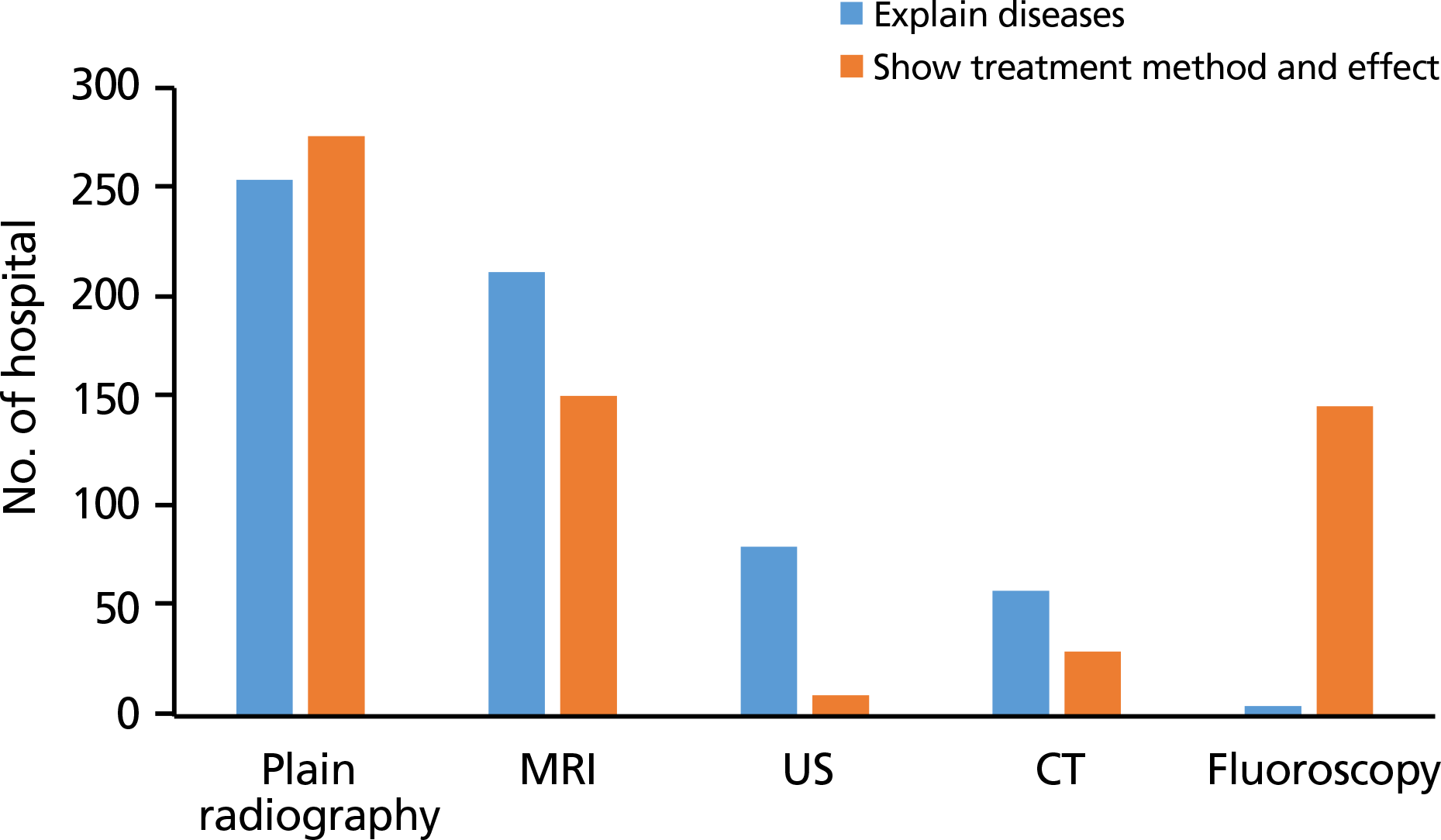 | Figure 1.Frequency of modalities of radiologic examination posted on hospital's websites. MRI, magnetic resonance imaging; US, ultrasonography; CT, computed tomography. |
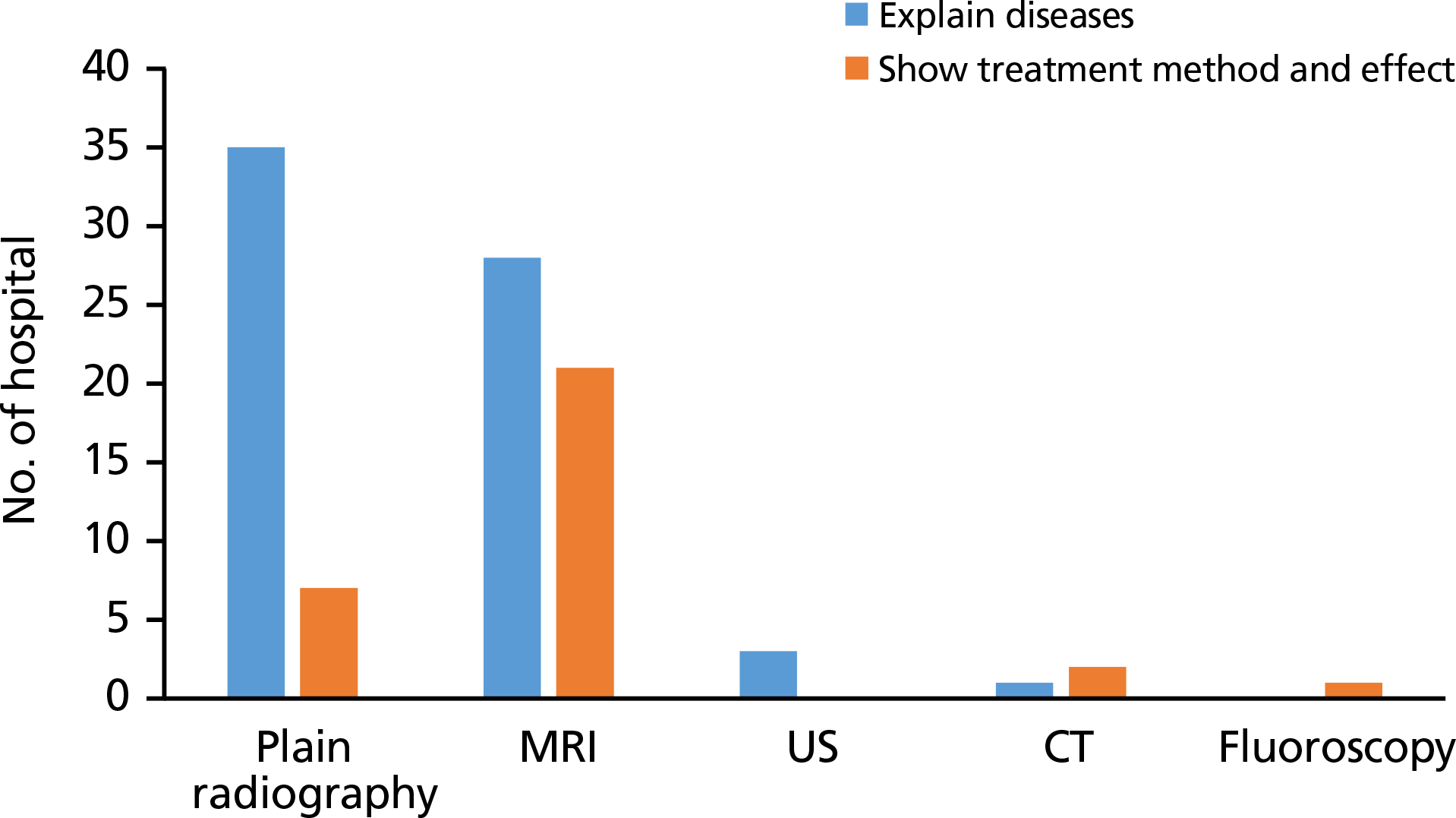 | Figure 2.Frequency of modalities of radiologic examination posted on oriental medicine hospital's websites. MRI, magnetic resonance imaging; US, ultrasonography; CT, computed tomography. |
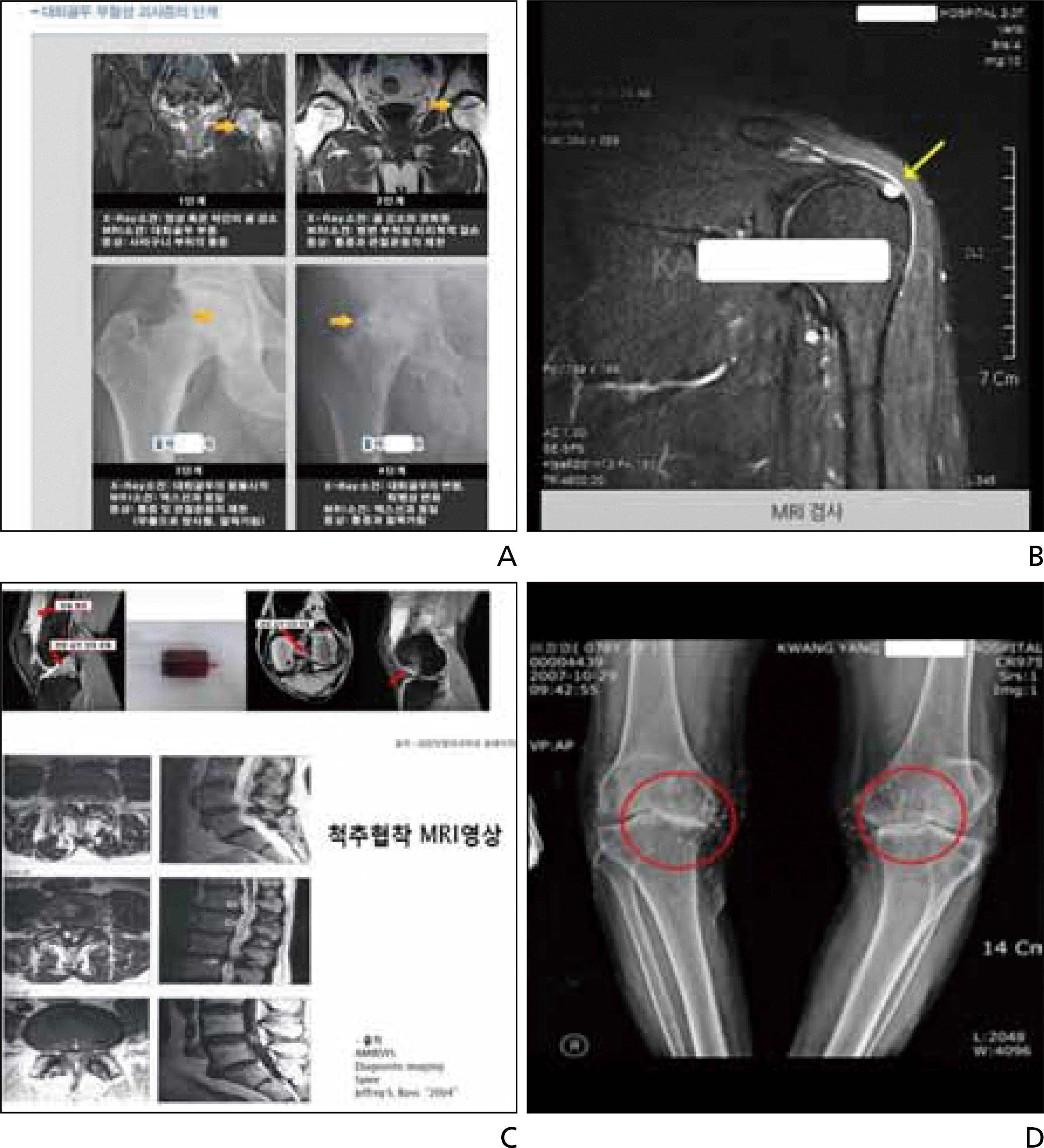 | Figure 3.Examples to credit the source of radiologic images. (A) Imprinted name of the hospital, (B) watermarking name of the hospital, (C) described references of each images, and (D) exposed patient's name, age, and hospital number. |
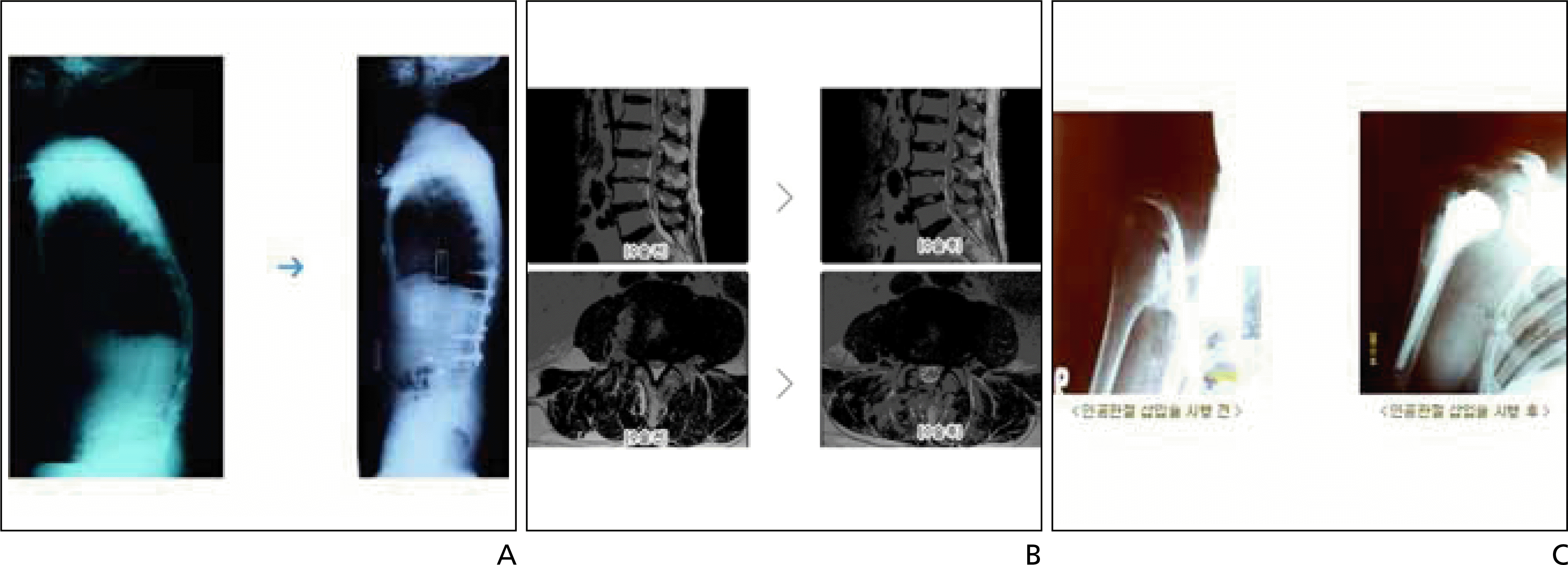 | Figure 4.Examples of images graded as poor quality. (A) It is impossible to define each vertebra on both images, due to inadequate contrast. (B) The resolution of lumbar spine MRI is very low. (C) The images are discolored and disproportional. |
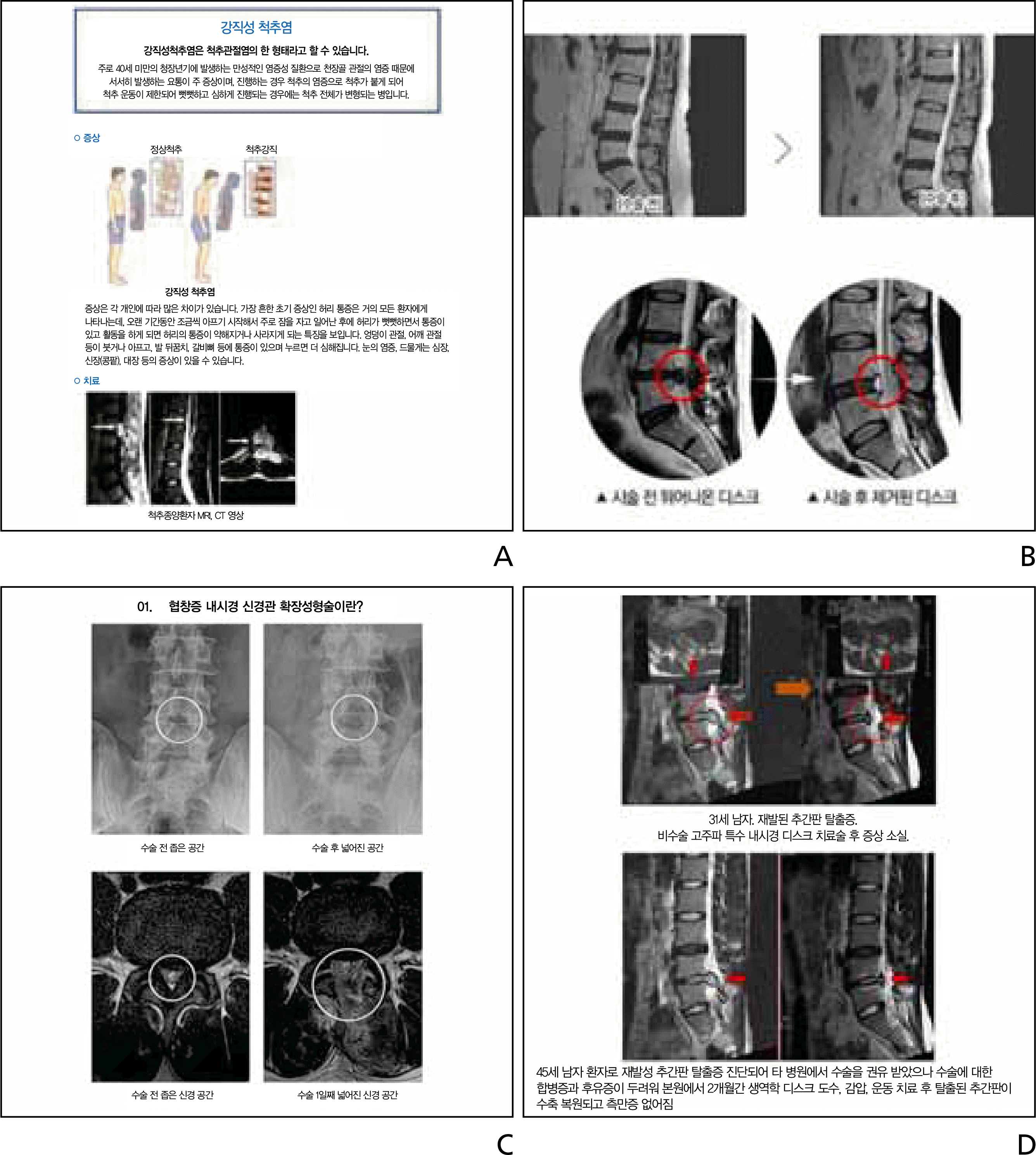 | Figure 5.Examples of incorrect explanation of radiologic images. (A) This section explains ankylosing spondylitis, but the images are spinal cord tumor. (B) This section compares the pre- and post-discectomy images, but the images are obviously from different patients. (C) This section explains the endoscopic surgery of spinal stenosis, but the images show post- laminectomy state. (D) The legends explain different methods of treatment, but the images are exactly the same. |
Table 1.
Investigation of radiologic images posted on nationwide hospital's websites




 PDF
PDF ePub
ePub Citation
Citation Print
Print


 XML Download
XML Download